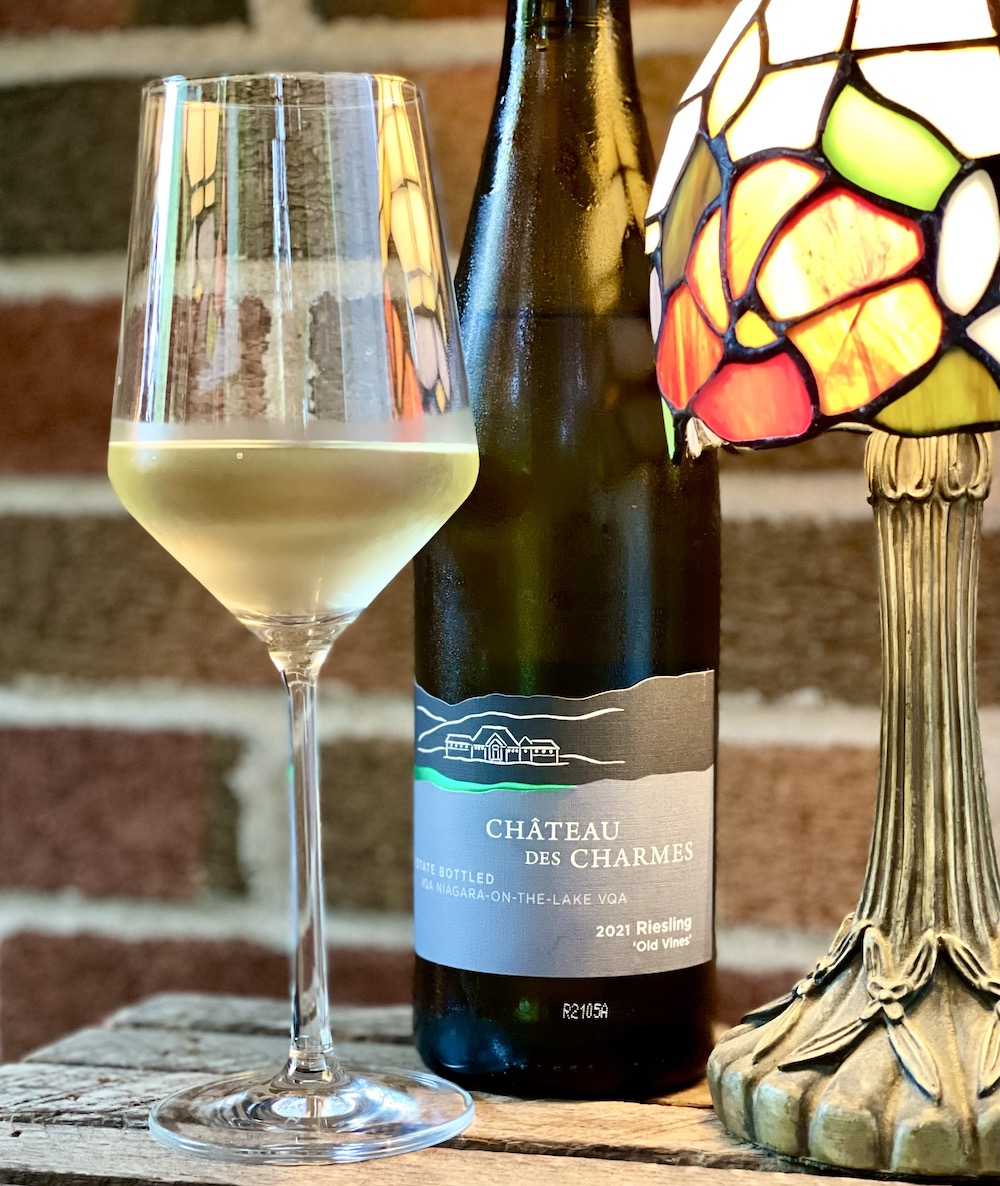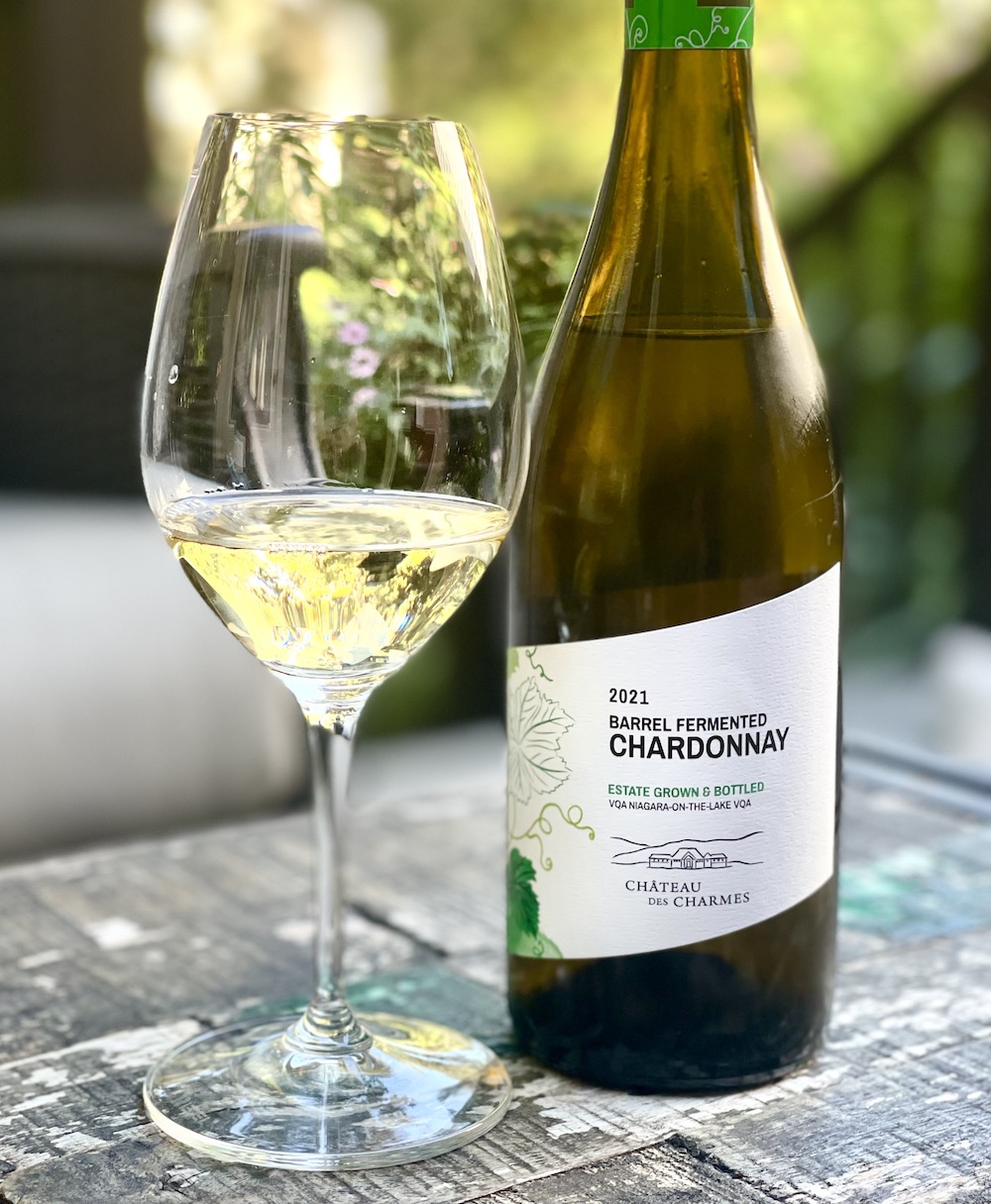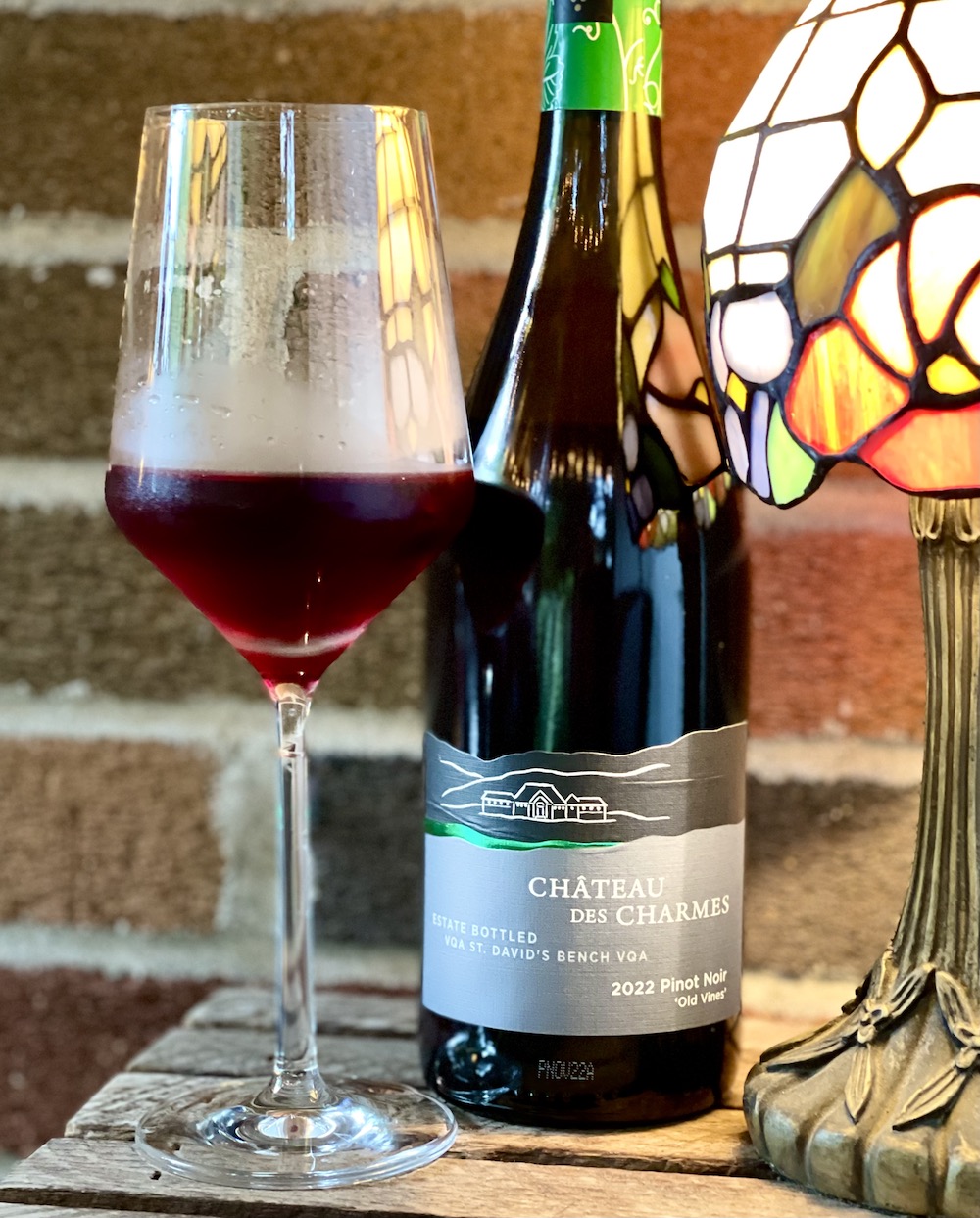By Rick VanSickle
As one chapter closes on the historic Château des Charmes winery in Niagara, a new one is just being written.
Note, also in this Ontario Wine Report: Our picks for Ontario wines being released at Vintages stores includes Hidden Bench, Southbrook, Lighthall from Prince Edward County, Marynissen, Featherstone and Rhone rosé that offers great value.
The grand estate, a majestic beacon for what is possible for Ontario viticulture with hard work, innovation and perseverance, was sold in June to an investment group from the GTA and Markham. It was the longest family-owned winery in Ontario, opening its doors in 1978 and joining only a few other pioneers credited with establishing the modern wine industry in Canada.

In the momentous year of 1975, Donald Ziraldo and Karl Kaiser of Inniskillin received the first new winery licence in Ontario in almost 50 years. That same year, Château des Charmes’ founder Paul Bosc Sr. planted his first vinifera grapes — Riesling — and set the stage for the St. David’s Bench winery to open three years later.
Paul Bosc Sr., a fifth-generation French winegrower, and his young family arrived in Niagara with the idea that growing their own grapes was the best way to make fine wine. He did what no other in Niagara-on-the-Lake had done before, he planted Canada’s first commercial vineyard dedicated exclusively to vitis vinifera, the European grape varieties that make the finest wines. The impact on the Niagara-on-the-Lake wine industry has been described as revolutionary.
Château des Charmes will live on as the new owners carry that Bosc legacy into a new era. The public face and chief operating officer of the new Château des Charmes, Marco Piccoli, told Wines in Niagara after the sale that the new owners are not involved in either the wine or hospitality businesses and prefer to take a backseat to running a business they are not familiar with. “They see a lot of potential in the Niagara wine industry,” said Piccoli. “I’m very excited by this, otherwise I wouldn’t have done it.”

For her part, Amélie Boury (above), the longtime winemaker heading into her 14th vintage at the estate, says, “I’m very happy to be part of the next chapter of Château des Charmes.”
Boury only planned to stay at the winery for a year when she was originally hired in August 2011 as an enologist and research assistant. But as she heads into harvest 2024, Boury can look back a career that took her all the way to vice-president of winemaking, vineyard and operations.

Boury was mentored by Paul Bosc Sr. (both above) and worked side by side with him right up until he passed away in December of 2023. She presides over a classic portfolio of wines across several tiers that has always remained on point and true to the estate vineyards that date back to the 1970s. She plans to enhance that history with a few surprises in the upcoming vintages.
For this tasting report on the newly released “estate” tier wines, Wines in Niagara had a few questions for Boury and what the future might look like. Here is our brief Q&A.
Wines in Niagara: You are enjoying a long and successful career at Château des Charmes, beginning in 2011. You’ve seen sadness with both the passing of Michele Bosc (wife of Paul Bosc Jr.) and Paul Bosc Sr., and now the sale of the winery to new owners. Can you talk about what it means to be the winemaker who presides over one of only a few of the original Ontario wineries? Do you feel a responsibility to represent the wines as Paul Bosc Sr. would have liked to see or have you tweaked the portfolio over time?

Amélie Boury: I have always been proud to have learned so much and worked alongside Paul Sr. He was a mentor to me and a grandfather-like figure. I was very fortunate to spend so much time with him. Time flies, and for someone who came originally to spend one year, I can’t believe this is my 14th harvest. I believe after so many vintages, I took ownership of the winemaking, especially when I became more involved with the vineyard management. Truly understanding each plot, its own characteristics, but Paul and I had similar tastes and so our winemaking was not that different overall. Be true to what your terroir is giving you, don’t mask, over oak, clean and precise.
WIN: What do you see with the future of winemaking at Château des Charmes, in terms of the new owners?
Amélie Boury: This adventure is really exciting. I’m very happy to be part of the next chapter of Château des Charmes. A new wind is important, it keeps all of us on our toes. New leadership and owners are seeing the potential of the winery, keeping it authentic but at the same time adding some growth. Marco (Piccoli) and I, alongside the team, are looking forward to this harvest, with some new wines in the pipeline, unique varietals, more sparkling and allowing winemaking creativity.

WIN: What’s your perfect food and wine pairing (using a Château des Charmes wine)?
Amélie Boury: For those who know me, it is evident! Gamay! Always Gamay!! For the Gamay Noir, chilled 10 minutes, no food required but if you insist, grilled portobello mushrooms on the BBQ! For the Gamay Noir Droit, duck magret with a blueberry balsamic glaze.
I tasted through a selection of newly released “estate” wines from Château des Charmes for this report. All the wines are from the two estate vineyards — St. David’s Bench Vineyard (where the estate is located) and the Paul Bosc Estate Vineyard, across York Road, where the Bosc family home is located. It should be noted that the Paul Bosc Vineyard was retained by Paul Bosc in the sale of the winery and the fruit will continue to be used in the Château’s production.

St. David’s Bench Vineyard: Planting began in 1990 with the first harvest in 1994. It consists of 72 acres and is planted to: Aligoté, Chardonnay, Cabernet Franc, Cabernet Sauvignon, Gamay Noir Droit, Gamay Noir, Merlot, Pinot Noir, Savagnin, Sauvignon Blanc and Gewürztraminer.
Fun fact: The term “St. David’s Bench” was coined by the Bosc family and the sub-appellation is named based on this term. The town of St. Davids is spelled without the apostrophe, while the sub-appellation is spelled with it due to an error that was never corrected by VQA.
Paul Bosc Estate Vineyard: Located across York Road from the Château, the grapes were planted there in 1983 and 1984 with the first harvest in 1988. It consists of 44 acres planted to Chardonnay, Cabernet Franc, Cabernet Sauvignon, Merlot, Pinot Noir, Riesling, and Sauvignon Blanc.
Fun fact: It is one of the very few vineyards in the region with southern-facing slopes.
New Château des Charmes wines

Château des Charmes Old Vines Riesling 2021 ($19, 91 points) — The Old Vines Riesling is from the Paul Bosc Vineyard planted in 1983. The nose shows defined lime/grapefruit, freshening saline, pear and ginger on the nose. It’s more concentrated on the palate with rich pear/quince, candied citrus, stoney minerality, ginger, a touch of honey and a bright, tangy finish.

Château des Charmes Cuvée Michèle Aligoté 2022 ($16, 90 points) — Aligoté is a rare vinifera variety (at least in Niagara) native to the Burgundy region of France and one of the first varieties Paul Bosc grew on the old Creek Road farm in 1970s. This Aligoté is from the home vineyard, most of it planted between 1991 and 1993 with a newer plot planted in 2017. This has a fresh, bright nose of crushed oyster shells, lemon zest, green apples and peach skin. It’s a light-bodied white wine on the palate with fresh orchard fruits, tangy citrus, saline minerality and mouth-watering acidity. Pass the oysters!
Note: In memory of Michèle Bosc, $1 from the sale of each bottle of Cuvée Michèle Aligoté at the winery or online will be donated to the Camp Kerry Society, which specializes in providing bereavement programs and support to individuals and families impacted by serious illness, grief and loss.

Château des Charmes Old Vines Savagnin 2023 ($25 when released at the end of the month, 92 points) — Savagnin is a rarely planted variety outside of France, and more accurately Jura, where it’s made in a Vin Jaune “yellow wine” style. Only a few other wineries in Ontario are making a Savagnin, including Rosewood, Big Head, Burning Kiln (using CdC grapes) and Megalomaniac. As Boury explained, “Paul (Bosc Sr.) imported most varieties present in France, with a focus on hardy varietals. Savagnin grows in the toughest winters of Jura, it just made sense to try it in Canada as well.”

This is the first “classic” rendition of Savagnin Boury has made at Chateau des Charmes. In 2012, she made a Vin Jaune style (which was released seven years later in 2019) and told me at the time: “The 2012 Vin Jaune is the only vintage I made, for the simplest reason that I never thought it would be a wine appreciated. It is a niche product, even in France, and to my biggest surprise, we sold out quickly. It took years to make and as I did not follow up right after the 2012 vintage was in process, I lost my voile culture (thin veil of yeast). There is none in the making to this day.” There have also been some vintages of Savagnin made into icewine. This Savagnin, planted in the home vineyard in 1993, is aged in neutral oak barrels for nine months.
Such an interesting and complex nose of white peach, quince, melon, green apple, saline/stony minerality, pineapple, orange blossoms and subtle toasty spice notes. It has lovely texture and a dry, succulent entry on the palate with peachy/pear fruits, some herbaceous notes, tangy citrus, a touch of flint, and a bright, lifted finish. Highly unique and delicious! Note: My sample was provided before the labels were ready.

Château des Charmes St. David’s Bench Vineyard Gewürztraminer 2022 ($22, 89 points) — The Gewürztraminer is grown at the home vineyard on two small parcels of 2.5 acres in total. The grapes are cold soaked on the skins for a few days to extract aromatics before it is pressed and fermented cool in stainless steel tanks, and a portion is aged in Acacia barrels. The highly aromatic nose shows pear, lychee, floral notes, apricots and perfumed spice. It has a luxurious texture on the palate, a hint of sweetness and exotic notes with pear puree, lychee, tropical fruits, white pepper, ginger and a rounded finish.

Château des Charmes Barrel Fermented Chardonnay 2021 ($16, 90 points) — This Chardonnay, from the home vineyard, was barrel fermented with extended lees contact and aged for nine months in the same French oak barrels. Boury believes “that if you are going to oak-age any wine it should be done judiciously so the fruit notes can still come through and this is a terrific example of that approach.” It shows ripe pear, peach, baked apple, lemon, toasty vanilla and spices on the nose. This is old school Chardonnay that’s not afraid to express itself on the palate with a rich, creamy entry and loaded with ripe orchard fruits, a touch of flint, lemon zest, toasty almonds and vivid spice notes with still room for freshening finesse and lift on the finish. Great value Chardonnay!

Château des Charmes Old Vines Pinot Noir 2022 ($35, 91 points) — Made with grapes sourced from the oldest vines in the estate’s St. David’s Bench Vineyard, planted in 1983, the wine is barrel aged to to enhance depth and richness. It shows a lighter shade of red in the glass but has an expressive nose of pure dark cherries, brambly raspberries, violets, and perfumed spices. The tannins on the palate are smooth and the fruits more savoury with red berries, a touch of anise, charred cedar and baking spices with a lifted, tangy finish. Can cellar to 2030.

Château des Charmes Old Vines Cabernet-Merlot 2022 ($37, 90 points) — This is a classically styled blend of Cabernet Sauvignon, Cabernet Franc and Merlot from the oldest blocks in both estate vineyards that has been aged for 18 months in French oak barrels. The nose shows black currants, blackberries, black raspberries, cocoa and rich spice notes. It’s a lighter bodied Bordeaux-style blend on the palate with some tannic structure, black currants, anise, cassis, ripe cherries, dark chocolate, spice and a polished, lifted finish. Can cellar to 2030.
Ontario wines coming to Vintages stores on Saturday
It’s been a little while for any new wines being released at LCBO stores. The last twice-monthly release was July 6 just when the union went on strike leaving those wines with little exposure for consumers.
The next release is Aug. 24 at Vintages stores, which combines the Aug. 10 and Aug. 24 offerings. Confused? Me too! As an LCBO spokesperson told Wines in Niagara: “As part of returning to regular operations, the Vintages release for August 10 and August 24 have been combined and will be made available in stores on August 24.”
Wines in Niagara has searched the combined the two releases and here are our picks of the Ontario wines being released Saturday.
Niagara wines we can recommend

Hidden Bench Fumé Blanc Rosomel Vineyard 2021 ($30, 92 points) — This 100% Sauvignon (no Semillon) was aged in predominantly neutral French oak barriques. It starts with flinty minerality on the nose followed by green apples, grassy/herbaceous notes, citrus zest, pear and just a hint of spice. It’s lifted and bright on the palate with notes of fresh apples, grapefruit, passionfruit, minty herbs, a touch of spice and a long, vibrant finish.

Marynissen Hanck Vineyard Heritage Collection Riesling 2022 ($23, 90 points) — Another Riesling crafted with low alcohol and high RS (25 g/l) using arrested fermentation, the intentional act of stopping an active fermentation before dryness. The nose is clean and lifted with notes of lime, grapefruit, some ginger spice, apple, peach and stony minerality. There’s honey goodness on the palate, with ripe peach, saline minerality, yellow apple, bergamot and juicy acidity on the finish keeping the sweet notes in balance. Can cellar 5+ years.

Southbrook Triomphe Sparkling Rosé NV ($30, 90 points) — This organic sparkling wine was made in the charmat method. Small amounts of Merlot and Pinot Noir were blended into the Chardonnay Musque to achieve the pale salmon colour in the glass. The nose shows fresh raspberries, red currants, summer cherries, herbs, and an elegant bead in the glass. The palate reveals an enticing basket of fresh-picked red berries, a touch of sweetness, citrus zest and persistent effervescent with mouth-watering acidity.

Featherstone Frostbite Select Late Harvest Gewurztraminer 2022 ($30 for 375 mL, 91 points) — If the super-sweet icewines of Niagara aren’t your jam, this 100% Gewurztraminer “late harvest” wine with a third of the sugar content (66 g/L of RS) might just be your newest best friend. It has an enthralling nose of lychee, grapefruit, brown sugar, bruised pear, apple cobbler and apricot tart. It’s silky and sweet (but not too sweet) on the palate with wild honey, ripe apricots, pears, peach preserves, lemon tart and a fairly lifted finish. A nice treat.
One from Prince Edward County

Lighthall Progression Sparkling Wine 2022 ($25, 89 points) — Made in the charmat method, this 100% Vidal sparkling wine is fresh and floral on the nose with citrus, melon, green apple, and a subtle effervescence. It’s bright and lively on the palate with tart citrus, peachy/melon notes, and tiny bubbles offering lift on the finish. Made from 55% County Vidal and the rest sourced from Niagara to keep up with the volume.
Other Niagara wines released but not reviewed by Wines in Niagara:
• Reif The Stars Dry Sparkling Riesling ($27)
• Charles Baker B-Side Riesling 2022 ($25)
• Flat Rock Cellars Unplugged Chardonnay 2023 ($20)
• Rosewood Neptune Riesling 2019 ($35)
• Featherstone Gamay Noir 2020 ($19)
• Hare Jack Rabbit Special Edition Red 2021 ($26)
A Rhone rosé worth buying

Chateau d’Espeyran Elègance Rosé 2023 ($19, 90 points) — This rosé is a Rhone blend of 80% Grenache and 20% Syrah that punches way above its weight. It shows a pale salmon colour in the glass with a highly aromatic nose of brambly raspberries, dark cherries, red currants, fresh saline and underlying earthiness. The melange of red berries is ripe and textured on the palate with a hint of herbs, white pepper and a lifted, fresh finish. Great value here.









Comment here